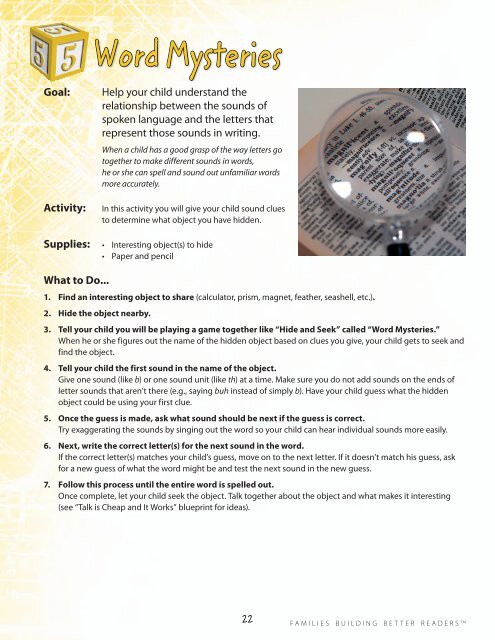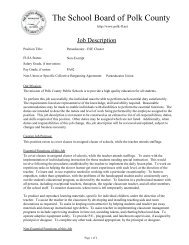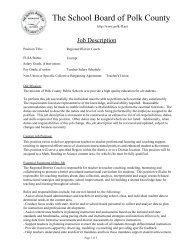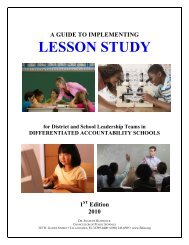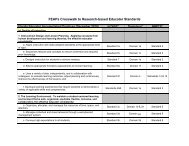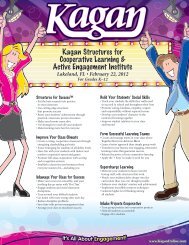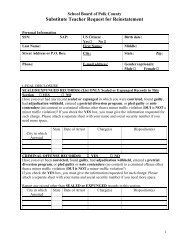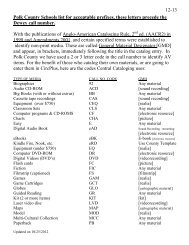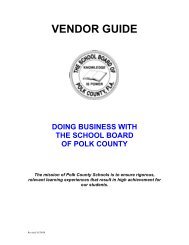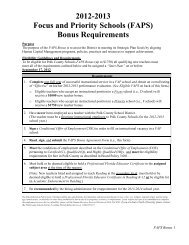Families Building Better Readers - Polk County School District
Families Building Better Readers - Polk County School District
Families Building Better Readers - Polk County School District
You also want an ePaper? Increase the reach of your titles
YUMPU automatically turns print PDFs into web optimized ePapers that Google loves.
Word Mysteries<br />
Goal:<br />
<br />
Activity:<br />
Supplies:<br />
Help your child understand the<br />
relationship between the sounds of<br />
spoken language and the letters that<br />
represent those sounds in writing.<br />
When a child has a good grasp of the way letters go<br />
together to make different sounds in words,<br />
he or she can spell and sound out unfamiliar words<br />
more accurately.<br />
In this activity you will give your child sound clues<br />
to determine what object you have hidden.<br />
• Interesting object(s) to hide<br />
• Paper and pencil<br />
What to Do...<br />
<br />
1. Find an interesting object to share (calculator, prism, magnet, feather, seashell, etc.).<br />
<br />
2. Hide the object nearby.<br />
<br />
3. Tell your child you will be playing a game together like “Hide and Seek” called “Word Mysteries.”<br />
When he or she figures out the name of the hidden object based on clues you give, your child gets to seek and<br />
find the object.<br />
<br />
4. Tell your child the first sound in the name of the object.<br />
Give one sound (like b) or one sound unit (like th) at a time. Make sure you do not add sounds on the ends of<br />
letter sounds that aren’t there (e.g., saying buh instead of simply b). Have your child guess what the hidden<br />
object could be using your first clue.<br />
<br />
5. Once the guess is made, ask what sound should be next if the guess is correct.<br />
Try exaggerating the sounds by singing out the word so your child can hear individual sounds more easily.<br />
<br />
6. Next, write the correct letter(s) for the next sound in the word.<br />
If the correct letter(s) matches your child’s guess, move on to the next letter. If it doesn’t match his guess, ask<br />
for a new guess of what the word might be and test the next sound in the new guess.<br />
<br />
7. Follow this process until the entire word is spelled out.<br />
Once complete, let your child seek the object. Talk together about the object and what makes it interesting<br />
(see “Talk is Cheap and It Works” blueprint for ideas).<br />
22<br />
F A M I L I E S B U I L D I N G B E T T E R R E A D E R S TM


